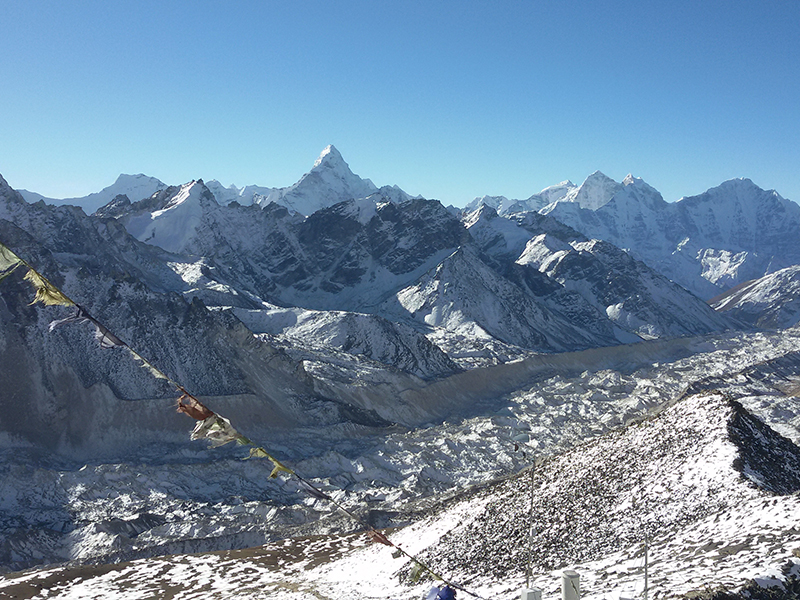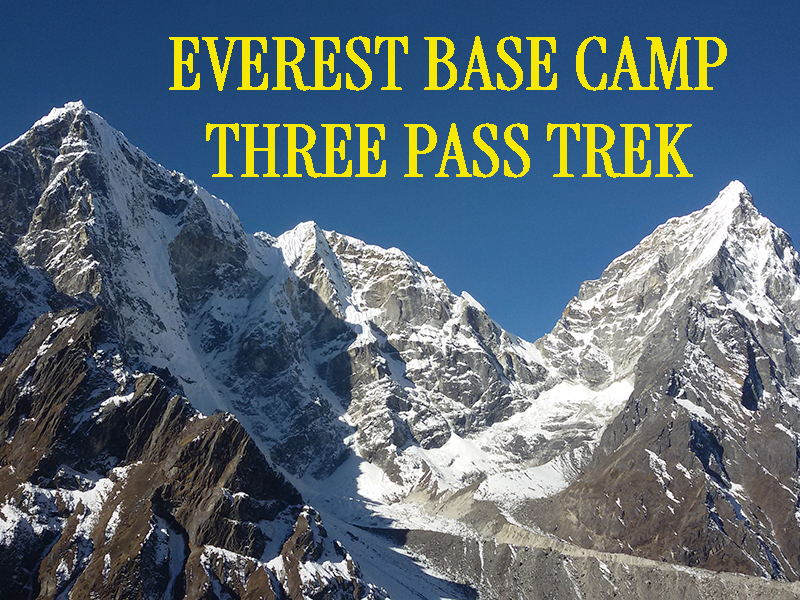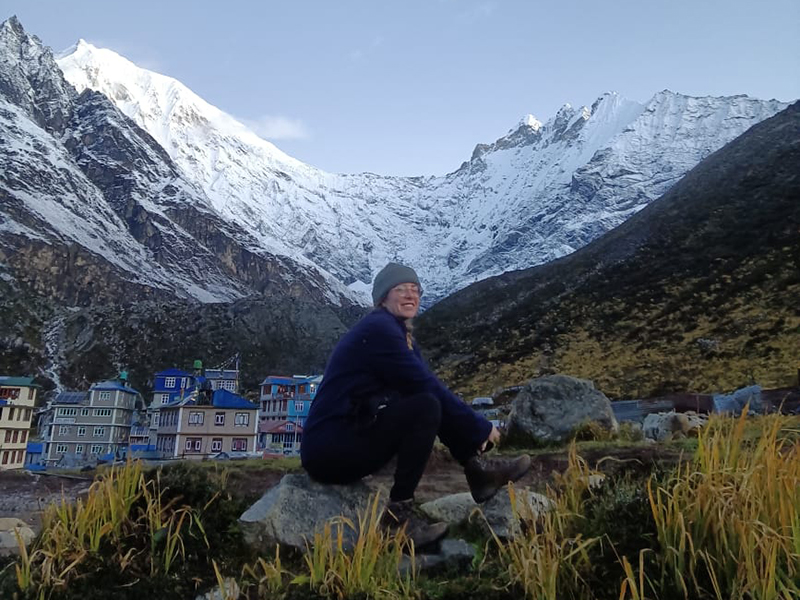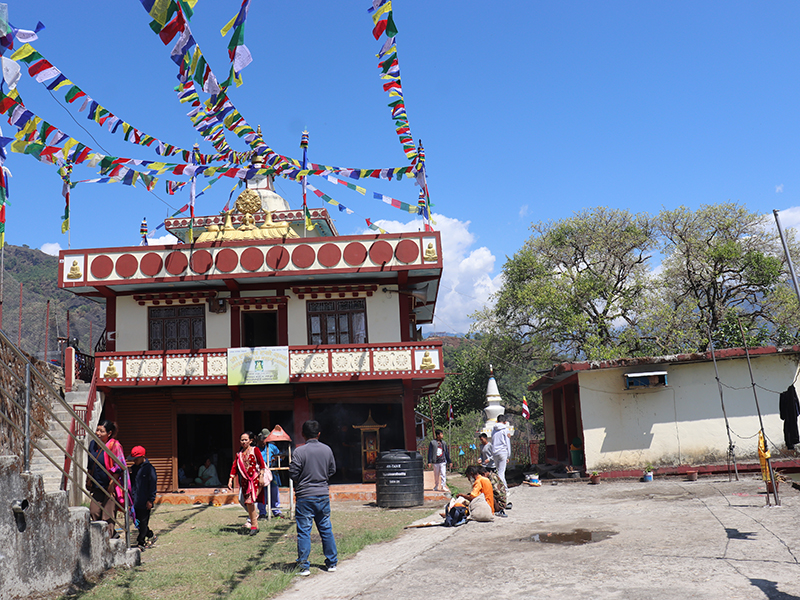Crossing Kongma La, Cho La & Renjo La: Highlights of the Everest Three Pass Trek

Nowadays, even the Everest Base Camp Trek is becoming the commercial trekking route. The trail is well trodden and equipped with modern facilities for lodging, meals, and amenities. Therefore, it is no longer challenging Himalayan adventure walking route despite it being the journey to the world’s tallest mountain Mt. Everest. So, where do we get to experience wilderness Himalayan mountaineering like feeling while on the trekking holiday? “Crossing Kongma La, Cho La & Renjo La: Highlights of the Everest Three Pass Trek” route are definitely setting bar high to obtain such thrill up in the Khumbu.
In today’s blog, we are trying to delve deeper into finding out the experiences that a trekker feels while crossing daunting mountain passes. At the end of the blog, trekkers will be able to find out what to expect during the trek. If you know about the things that are coming and if a traveler can anticipate things, then it will surely helps to do the successful trekking. This blogger has done the Everest Three High Pass Trek multiple times. Therefore, all the things that are shared in today’s blog are authentic as well as updated.
High mountainous regions are always changing. The global warming is the major factor behind the changing face of the high – altitude places. Therefore, you should always get the latest information before embarking on the journey of such caliber. For example, Renjo La Pass (5360 m) used to be covered by snow all the time but now it is the rocky mountain pass. Therefore, you should always be mindful while doing such high – altitude trekking trips.
Explore Entire Everest in one single Trek Itinerary
Do you know that the journey of the Everest Three High Passes Trek covers almost every areas of the Upper Khumbu region of Nepal? Yes, the trail traverses through Chhukung Kongma La, Everest Base Camp Trek route, Chola Pass Gokyo Valley route, and Renjo La Thame route. All these places are major trekking destinations of the Everest region. If you take a look at the various trekking trips listed in the region, only destinations that are missing from this trail are Amadablam Base Camp and Dole – Machhermo area. Therefore, most of the trekking guides and travelers consider the Everest Three High Passes Trek as the exploration of an entire Everest region.
Highlights of the Everest Three Pass Trek
As mentioned above, the Everest Three High Passes Trek in Nepal is one of the major detour trekking routes. Therefore, it is always enticing at the same time challenging. While on this daring trekking adventure, you get to relish the following highlights which make this trip even more momentous and worthwhile. The cost of the Everest Three High Passes Trek is slightly expensive than the regular Everest Base Camp Trek but these highlights help you to get back every penny spent for the trip.

Highlights of the Everest Three High Passes Trek are as follows:
- Everest Base Camp (5364 m) and Kalapathar Hike (5545 m)
- Sherpa Villages, Monasteries, and Chortens
- Tenzing Hillary Airport Lukla (World’s most extreme airport)
- Beautiful Gokyo Valley and lakes
- Diverse Vegetation (Temperate Deciduous, Alpine, and Tundra)
- Differing Landscapes (Valleys, Rivers, Waterfalls, Glaciers, Moraines, Mountain Passes)
- Commercial Amenities high in the mountains (Upscale Lodging, Meals, & Facilities)
- Over 2 dozen mountain vistas
- Cho la Pass, Kongma La Pass, and Renjo La Pass
- Exploration of almost all regions of Khumbu
Crossing Kongma La, Cho La & Renjo La: Highlights of the Everest Three Pass Trek
Let’s come back to the main topic of today’s blog “crossing Kongma La, Cho La and Renjo La: Highlights of the Everest Three Pass Trek”. Allow me to describe in details by breaking down the Everest Three High Passes Trek with Kongma La Crossing, Everest Base Camp hike, Cho La Pass crossing, and Renjo La Pass crossing.
Kongma La Crossing from Chhukung to Lobuche
The first mountain pass to cross in this challenging journey is the Kongma La Pass (5535 m). Please note that the clockwise way of doing the Three High Passes Trek has Renjo La Pass as the first pass. However, the best and the safest way to do this trek are following the anti – clockwise direction. There are more acclimatization days on this section than the clockwise section.
Trekkers have to start the climb from the Chhukung Valley. The trail is steep uphill on a narrow trail until trekkers reach the first ridge summit. The view of the mountains and valleys looks spectacular but you need to be careful as the terrain is full of wilderness character. The longest pass among these three is the Kongma La Pass. The route includes the lake which is also the base camp of the Pokalde Peak Climbing and several uphill – downhill sections including the glacier. It takes about 8 to 9 hours to reach Lobuche and join the Everest Base Camp Trek route from Chhukung Valley via Kongma La Pass.
Hike to Everest Base Camp during Everest Three Passes Trek
The epic part about the Three High Passes Trek is that the journey includes the itinerary of the Everest Base Camp. Therefore, if you add about 400 to 600 $ more in the original Everest Base Camp Trek package, then you can do this challenging trekking journey. Next time, if you are planning to visit the Everest Base Camp, try the Everest Three High Passes Trek instead for ultimate adventure. It takes about 5 to 6 hours to reach the Everest Base Camp from Lobuche via Gorakshep. The trail is however rugged and full of rocky boulders. Leave your footprints at the base camp and return to conquer the Cho La Pass after witnessing majestic Himalayan sunrise in Kalapathar.
Cho La Pass Trek from EBC to Gokyo Valley
The EBC Chola Pass Trek takes about 2 nights and 3 days from the Everest Base Camp to reach Gokyo Ri Trek. Among three high mountain passes of the region, crossing Chola is technical and difficulty. The Kongma La is the longest, the Cho La (5420 m) is the hardest, and the Renjo La is rocky. These three passes have their own unique traits. There are fixed ropes and steel bars that help trekkers to ascend and descend from the top of the Cho La Pass. Relish the magnificent scenery of mountains like Choyou, Everest, Lhotse, Nuptse, Amadablam, Makalu, etc. from the top of the pass.
You have to spend a night in Thangnak before walking through the Ngozumpa glacier to reach Gokyo Valley. However, some people directly head towards Gokyo Valley but it can be extremely tiring.
Trek to 5th Gokyo Lake for best view of Mt. Everest
Another beautiful place that falls in the Everest Three High Passes Trek route is the Gokyo Valley. The presence of Ramsar Conservation site listed lakes and gorgeous vantage point make this place worthy to be labeled as the fairyland. During the stay in the valley, trekkers can explore 5 lakes out of 19 lakes of the region and the hike of the Gokyo Ri. While on the journey to the 5th lake, you can get the most astounding scenery of Mt. Everest. The sight of the Everest from the EBC Trek route is comparatively small but the sight that you see from the 5th Lake trek route is majestic. Moreover, the size of the Everest looks clear and you get to enjoy long view of the mountain.
Renjo La Pass: Rocky Mountain Pass to Thame Village from Gokyo Valley
Finally, the last pass to cross is the Renjo La Pass (5360 m). The trail is rugged and full of boulders. Walking in such trail is exhausting but coming this far will make your mental and physical state strong and can help you easily conquer the pass. The scenery of the mountains on all sides the valleys helps you forget all the hardships.
On the other side of the pass is the legendary Thame Village. This village is one of the major Sherpa villages of Khumbu where legend is that each village has at least one Everest summiteers. Once the trekkers reach Namche Bazaar, they retrace the same trail back to Lukla and end the trek.
Physical Preparation for Three High Pass Trek
The challenging trek high in the mountains with majority of the sections above 4000 m altitude is never easy. You must prepare your mind and body to cope up with the physical demands and mental strength. Make sure that you are capable of walking for about 7 to 8 hours continuously for two weeks minimum in the higher elevation. Therefore, you must build your cardio – vascular abilities. Consult your doctor before embarking on this epic trekking adventure.
Please don’t miss out to collect the intrepid mini – mountaineering feelings by book the Everest Three High Passes Trek in Nepal. If you want to know the best travel company for this adventure, then look no further than the Everest Trekking Routes Pvt. Ltd. You can surely get the best prices, quality services, and success guaranteed.
Recent Travel Blog
Travel tips and Mostpopular activities around in Himalayas.

Crossing Kongma La, Cho La & Renjo La: Highlights of the Everest Three Pass Trek
Nowadays, even the Everest Base Camp Trek is becoming the commercial trekking route. The trail is well trodden and equipped with modern facilities for lodging, meals, and amenities. Therefore, it…

Gosaikunda Lake & Langtang Highlights: Complete Trek Itinerary & Guide
Some places are deeply rooted with people’s beliefs and exude extraordinary supernatural power. Divinity splashes all over these places and once you visit such place; you start to realize the…

Why the Manaslu Circuit is the best alternative to the Annapurna Circuit?
Why the Manaslu Circuit is the best alternative to the Annapurna Circuit? Sometimes developmental activities and modernization can have adverse effects? It sounds odd but it is true in case…





